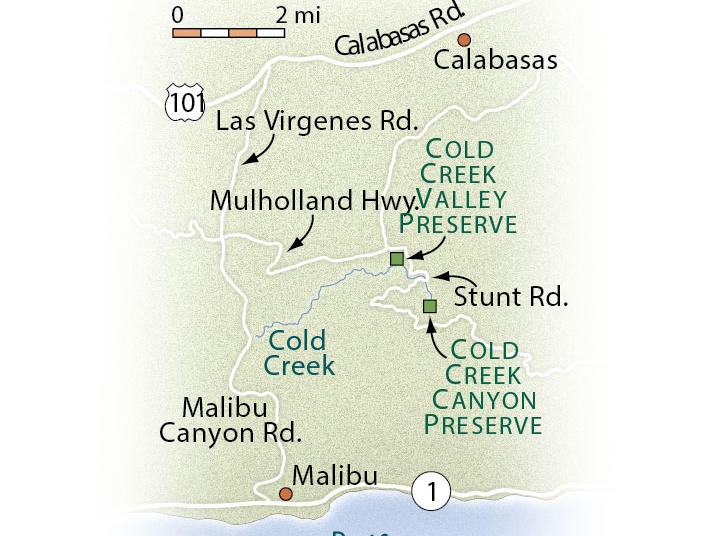
Cold Creek oasis

Fed by springs and runoff from slopes that plunge from high ridges between Calabasas and Malibu, Cold Creek is one of those rare but welcome Southern California sights: a year-round stream.
In the upper reaches of Cold Creek Canyon, a dense riparian forest supports an almost junglelike world of small waterfalls and clusters of ferns. In late spring, brilliant orange and black Humboldt lilies bloom next to the creek. Stream orchids and rein orchids also grow in the canyon, which on warm, sunny days can take on a tropical humidity.
Considered one of the most pristine and biologically rich spots in the Santa Monica Mountains, this onetime homestead in the upper canyon is administered by the Mountains Restoration Trust as the Cold Creek Canyon Preserve. The trust has a busy schedule of hikes here and in the wildflower- and chaparral-filled Cold Creek Valley Preserve just downstream.
One recent Saturday, I joined a hike down the lower canyon’s Cold Creek Trail (also known as the Lower Stunt High Trail), led by the trust’s docent coordinator, Nancy Helsley. Even though the land had yet to green up from winter rains, Helsley brought this place alive.
She showed us bedrock mortars used by Chumash Indians to grind acorns, and she located the camouflaged lair of a trap-door spider. We passed underneath a canopy of oaks and sycamores, and then, as the trail paralleled the creek, stands of ceanothus. The trail finally emerged into a clearing full of red shank, a plant that grows only in four places in the world. High overhead, ravens harassed a red-shouldered hawk.
Cold Creek, says Helsley, is one of the best places for Southern Californians to develop an understanding of the diversity of these mountains. She recalls that when she first moved to the area in 1965, she was convinced that every little rustle in the brush was a snake. “The Chumash could read this land like the backs of their hands,” she says. “It took me a while, but now I can often tell what animal it is just from the sound. This is a place that lets you develop a sense of awe and reconnect with the natural community around you.”
